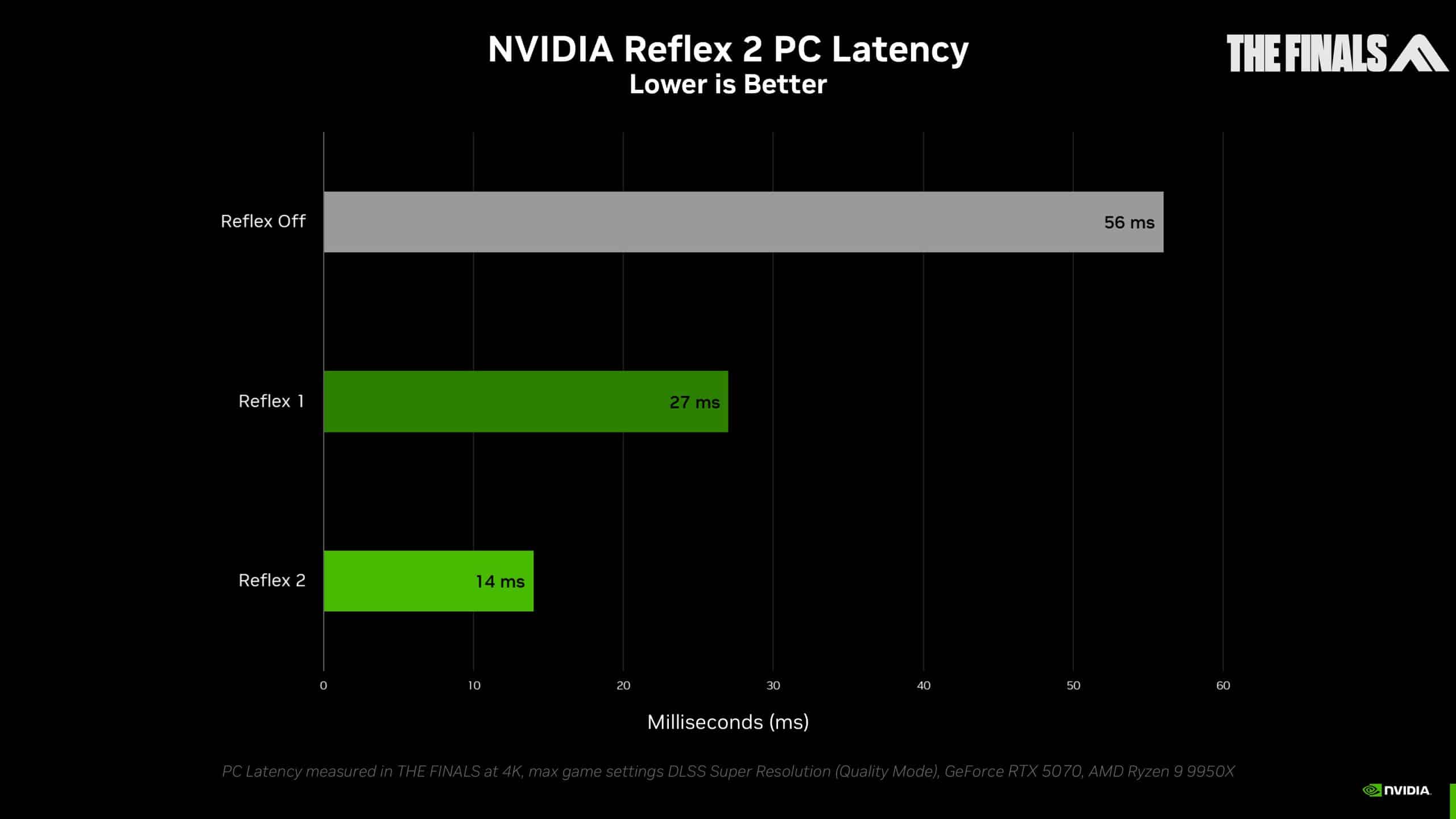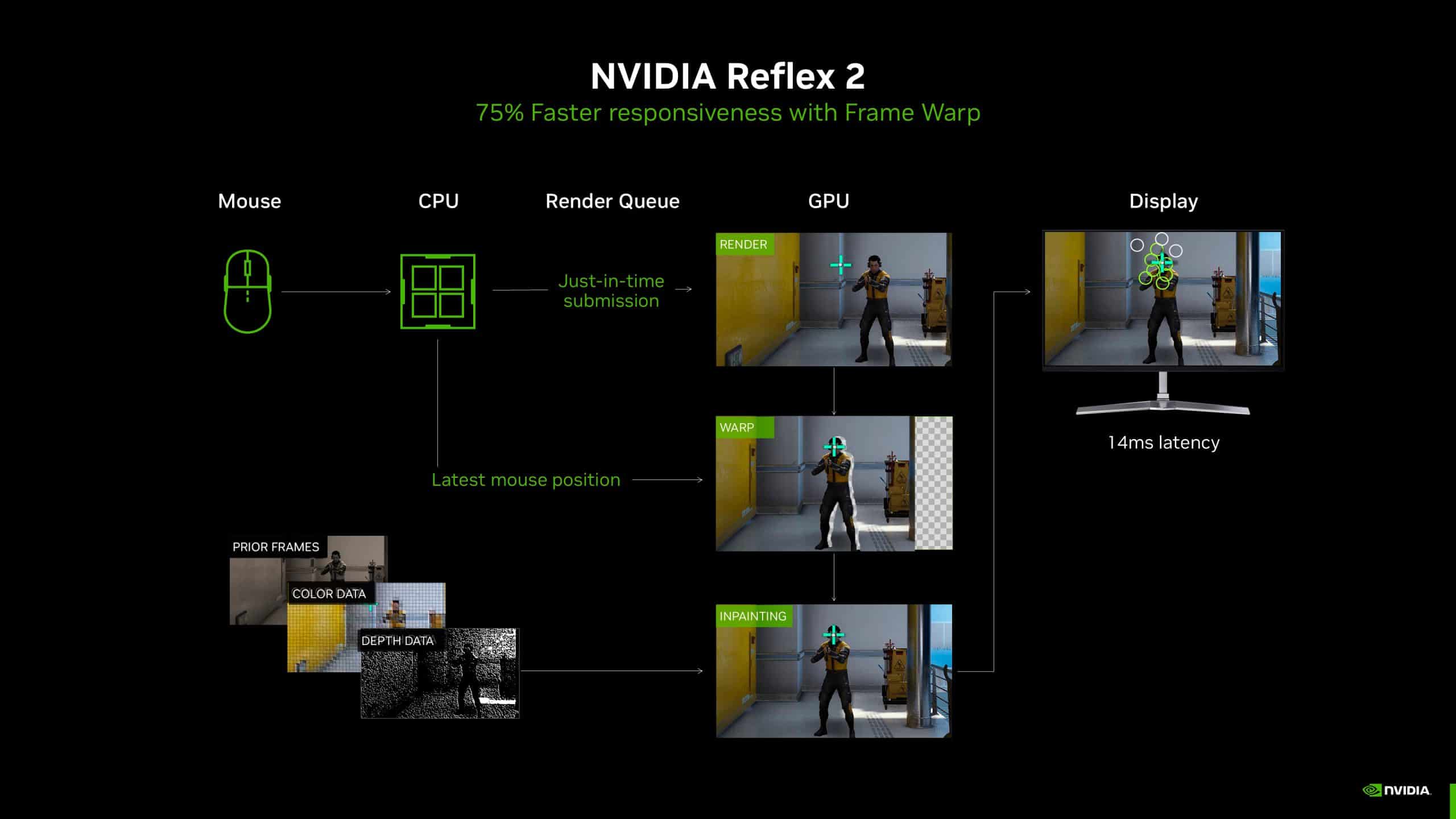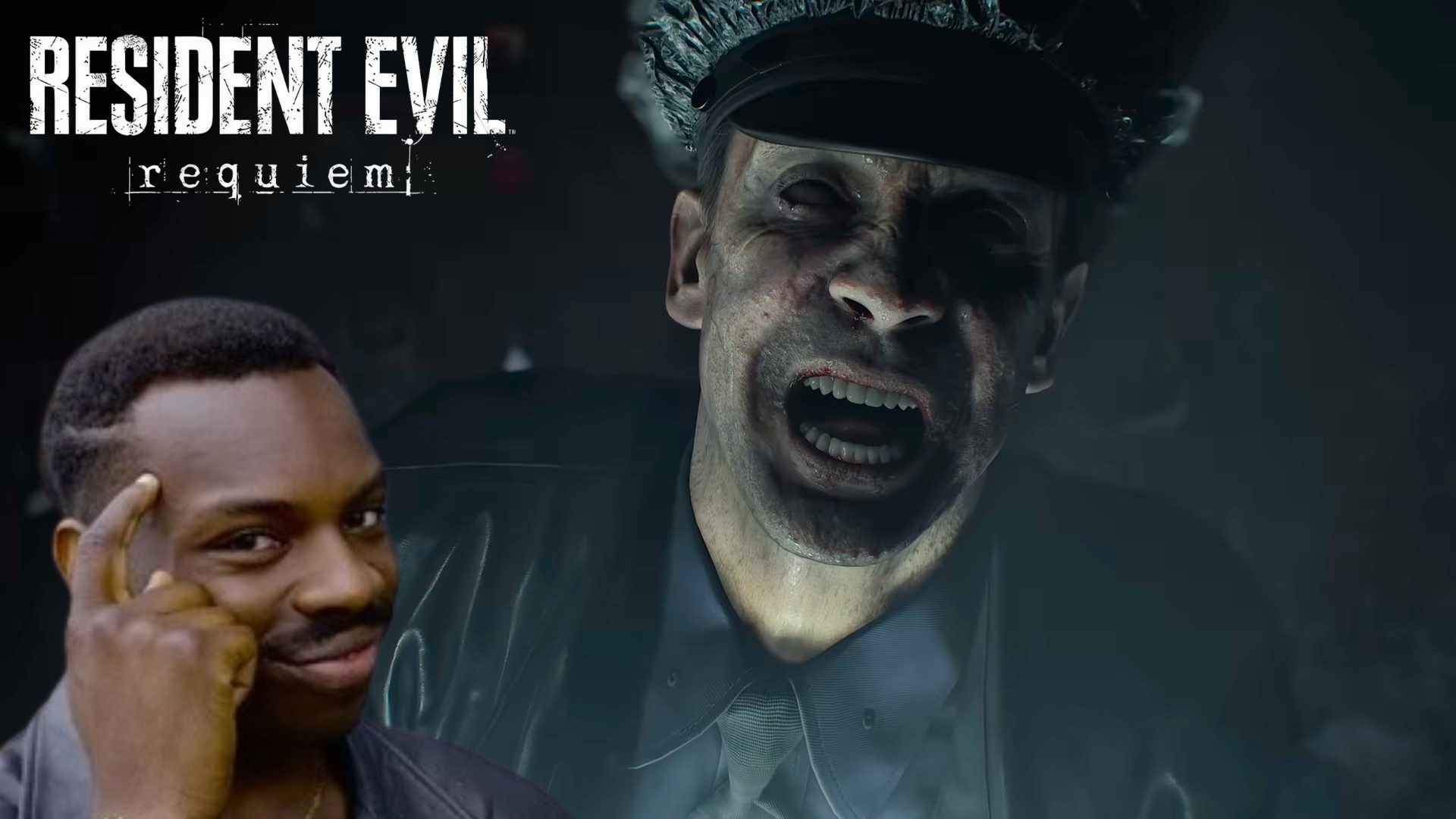- NVIDIA Reflex 2 launches exclusively on RTX 50 GPUs, featuring Frame Warp technology for significantly reduced latency (up to 75% in some tests).
- This initial exclusivity likely allows NVIDIA to optimize Reflex 2 alongside DLSS 4’s Machine Frame Generation, which also impacts latency.
- Support for older RTX cards is planned, but no release date has been given. Initially, only The Finals and Valorant will support Reflex 2.
NVIDIA has revealed that its new Reflex 2 low-latency technology will only work with GeForce RTX 50 “Blackwell” GPUs at launch, with support for older GeForce RTX graphics cards planned for later, suggesting the company is only focused on fine-tuning things for the RTX 50 series graphics cards.
It only works on the GeForce RTX 50 during its debut makes a lot of sense because these graphics cards have access to the Machine Frame Generation under NVIDIA DLSS 4 upscaling technology. That now generates more frames through AI to increase performance.
Although of course, this increases latencies even more, so it makes sense that they have focused on preparing everything for the launch of these GPUs. These are the only ones that will experience this increase in latencies compared to the rest of the models from previous generations.
No Date On NVIDIA Reflex 2 For ‘Non-RTX 50’ GPUs
Official NVIDIA documents have already indicated that Reflex 2, together with its new Frame Warp technology, manages to reduce game latency by up to 75%. This measurement is based on a performance test carried out on the competitive shooter THE FINALS.
With an AMD Ryzen 9 9950X and an NVIDIA GeForce RTX 5070, at 4K resolution, without Reflex 2 with Frame Warp technology, the player experiences a latency of 56 ms. With NVIDIA Reflex 1, this is reduced to 27 ms while with Reflex 2 latency is reduced to just 14 ms in The Finals game. Which thus gives a 75% improvement of Reflex 2 between not using the technology.
NVIDIA’s FAQ states that Reflex Frame Warp technology requires several minimum requirements to be used. The first is an NVIDIA GeForce RTX 5.0 GPU, whether desktop or laptop. This must be accompanied by GeForce 570 or higher graphics drivers.
Thus, we will have to wait for future software updates to implement compatibility of this technology with older graphics cards. Although, unfortunately, there is still no roadmap that offers an approximate date of when these GPUs will be supported. For now, the only two games that will support this technology are THE FINALS and VALORANT.
How Frame Warp Works
NVIDIA Reflex 2 is based on Reflex 1 but with Frame Warp technology. According to NVIDIA, Reflex 2 is the culmination of four years of research in the world of eSports. Of course, low latency is essential in these competitions, especially when we talk about shooters, where professionals want to play with extremely high response times along with low latency.
In this new version, the GPU renders a frame, but now the CPU is added to it by calculating the camera position in the next frame based on the last mouse or controller input. Frame Warp samples the new camera position from the CPU and warps the frame just rendered by the GPU to this new camera position.
The warping is done as late as possible, just before the rendered frame is sent to the screen, ensuring that the last mouse input is reflected on the screen without introducing much latency.
Thank you! Please share your positive feedback. 🔋
How could we improve this post? Please Help us. 😔
[Editor-in-Chief]
Sajjad Hussain is the Founder and Editor-in-Chief of Tech4Gamers.com. Apart from the Tech and Gaming scene, Sajjad is a Seasonal banker who has delivered multi-million dollar projects as an IT Project Manager and works as a freelancer to provide professional services to corporate giants and emerging startups in the IT space.
Majored in Computer Science
13+ years of Experience as a PC Hardware Reviewer.
8+ years of Experience as an IT Project Manager in the Corporate Sector.
Certified in Google IT Support Specialization.
Admin of PPG, the largest local Community of gamers with 130k+ members.
Sajjad is a passionate and knowledgeable individual with many skills and experience in the tech industry and the gaming community. He is committed to providing honest, in-depth product reviews and analysis and building and maintaining a strong gaming community.


 Threads
Threads



